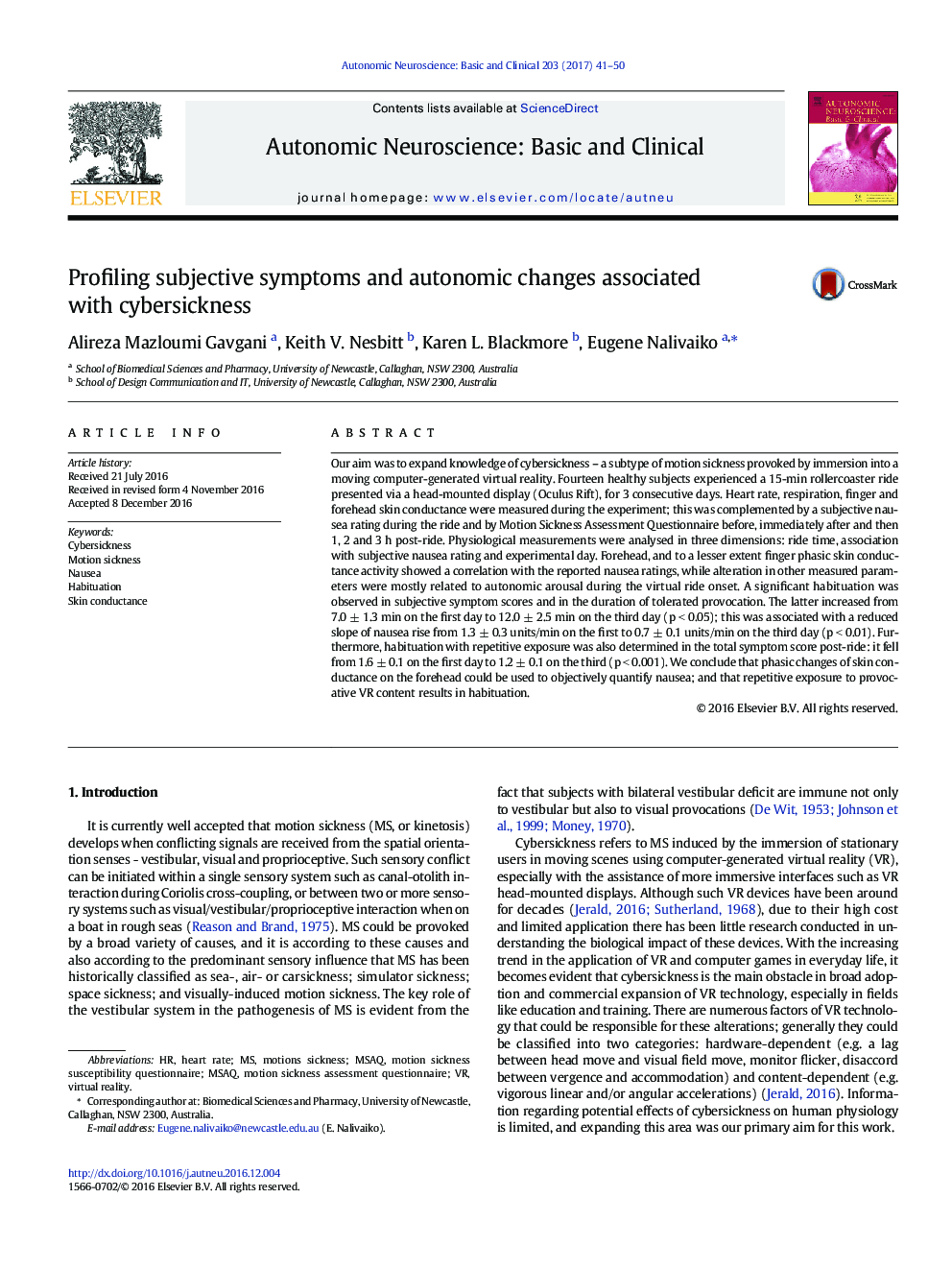| Article ID | Journal | Published Year | Pages | File Type |
|---|---|---|---|---|
| 5626094 | Autonomic Neuroscience | 2017 | 10 Pages |
Our aim was to expand knowledge of cybersickness - a subtype of motion sickness provoked by immersion into a moving computer-generated virtual reality. Fourteen healthy subjects experienced a 15-min rollercoaster ride presented via a head-mounted display (Oculus Rift), for 3 consecutive days. Heart rate, respiration, finger and forehead skin conductance were measured during the experiment; this was complemented by a subjective nausea rating during the ride and by Motion Sickness Assessment Questionnaire before, immediately after and then 1, 2 and 3 h post-ride. Physiological measurements were analysed in three dimensions: ride time, association with subjective nausea rating and experimental day. Forehead, and to a lesser extent finger phasic skin conductance activity showed a correlation with the reported nausea ratings, while alteration in other measured parameters were mostly related to autonomic arousal during the virtual ride onset. A significant habituation was observed in subjective symptom scores and in the duration of tolerated provocation. The latter increased from 7.0 ± 1.3 min on the first day to 12.0 ± 2.5 min on the third day (p < 0.05); this was associated with a reduced slope of nausea rise from 1.3 ± 0.3 units/min on the first to 0.7 ± 0.1 units/min on the third day (p < 0.01). Furthermore, habituation with repetitive exposure was also determined in the total symptom score post-ride: it fell from 1.6 ± 0.1 on the first day to 1.2 ± 0.1 on the third (p < 0.001). We conclude that phasic changes of skin conductance on the forehead could be used to objectively quantify nausea; and that repetitive exposure to provocative VR content results in habituation.
